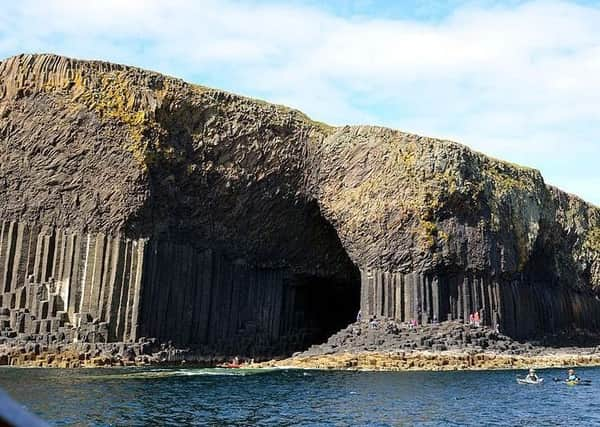Workmen due to move into Fingal's Cave next month


Visits to the dramatic site in the Inner Hebrides have been restricted since March after extreme weather destroyed part of the walkway that lead into the cave.
Workmen are due on the site next month after a solution was found to repair the damage in the challenging environment.
Advertisement
Hide AdIt is now hoped the walkway will be open during the summer season, if a period of settled weather allows the work to go ahead as planned.
Alan Rankin, islands operations manager at National Trust for Scotland, said three columns that supported the walkway were destroyed over winter.
He added: “They were basically blasted away by the winter gales and these enormous waves that were rolling off the Atlantic. The first thing they come to is Staffa.”
Mr Rankin said it was planned to cut back some of the rock at Fingal’s Cave and build up the stone area to allow access for visitors.
He added “This is not a new process, it is something that has been done for years.
“Because of where the stone was washed away, it is a very exposed area. We will have to get a settled spell of weather to do the work.
Advertisement
Hide Ad“We have a good relationship with the boat operators that take visitors out. They are happy to take men and materials out when we are ready to go. There is a real team effort in that regard.”
How people will access Staffa in the future is also being looked at, Mr Rankin said.
Advertisement
Hide Ad“We are looking at a longer term solution for Staffa. We will never future proof it completely against nature but we want to see what steps we can take to support local boat operators to provide a safe and enjoyable experience on the island.”
Fingal’s Cave was formed by the same type of lava that created the Giant’s Causeway in Country Antrim between 50 and 60 million years ago.
It was created at the same time as the Giant’s Causeway in Antrim by the same Paleocene lava flow with both landmarks sharing the same stunning hexagonally joined basalt pillars.
Its natural acoustics amplify the sounds of the waves with its arched roof earning the cave the Gaelic name ‘Uamh-Binn’ - or the cave of melody.
Composer Felix Mendelssohn visited the cave in 1829 while on a tour of Scotland and completed his Hebrides Overture, which is also known as Fingal’s Cave, the following year.
The work helped the landmark become a tourist destination with famous visitors including Sir Walter Scott, Keats, Turner, Queen Victoria and Prince Albert, Prince William of Orange, William Wordsworth, Jules Verne and Robert Louis Stevenson.
Advertisement
Hide AdTourist also flocked there during the Victoria era when cruises to the Western Isles grew increasingly popular. A report in The Scotsman on Friday, September 6, 1872, notes how new railings and wire ropes had been installed at the cave to allow the “most timid to tread with confidence” over the uneven pillars.
